Discover the art of Ayurvedic cooking and unlock the secrets to a healthier, more balanced lifestyle with Ayurvedic seasonal recipes. This ancient Indian practice emphasizes the use of freshly sourced, seasonal ingredients to promote overall wellness and inner harmony. In the Ayurvedic Wellness Cookbook by Gita Ramesh, you’ll find a collection of vegetarian recipes that not only tantalize your taste buds but also offer therapeutic benefits.
Ayurveda is more than just a diet; it is a holistic philosophy that encourages mindful eating and nourishment. By embracing seasonal eating, we align ourselves with nature and harness the nutritional power of each season’s produce. Ayurvedic recipes are thoughtfully designed to support detoxification and rejuvenation, allowing us to thrive in harmony with our environment.
Whether you’re new to Ayurvedic cooking or a seasoned practitioner, these recipes offer something for every season and taste preference. From warming soups and hearty stews for the colder months to refreshing salads and cooling drinks for the summer, Ayurvedic recipes can be enjoyed year-round.
Embark on a culinary journey that combines flavour, nutrition, and mindfulness. Explore the world of Ayurvedic cooking and bring balance and wellness to your plate.
Table of Contents
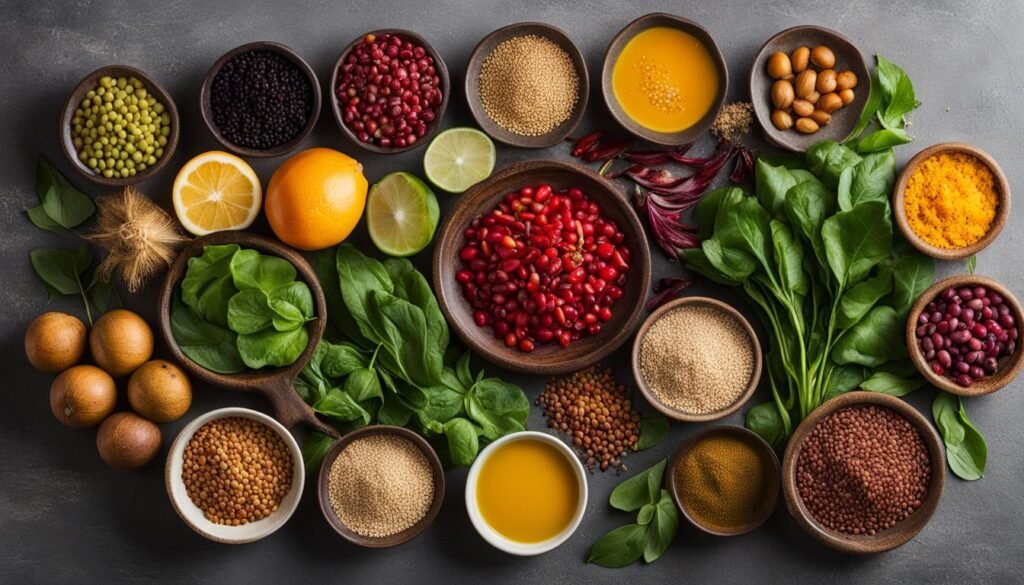
Key Takeaways:
- Ayurvedic seasonal recipes emphasize the use of freshly sourced, seasonal ingredients.
- These recipes offer therapeutic benefits and promote overall wellness.
- Ayurvedic cooking is a holistic philosophy that encourages mindful eating.
- Seasonal eating aligns us with nature’s nutritional offerings.
- Ayurvedic recipes can be enjoyed year-round, catering to different taste preferences.
The Philosophy of Ayurveda in Cooking
Ayurveda, the ancient Indian system of medicine, extends its principles to the realm of cooking and eating. It promotes a mindful and holistic approach to nourishment, emphasizing the use of seasonal ingredients to support detoxification and rejuvenation. Ayurvedic philosophy recognizes that food is not just a source of calories, but also a powerful tool for healing and maintaining optimal health.
Mindful eating is a fundamental aspect of Ayurvedic philosophy. It encourages individuals to pay attention to their eating experience, savouring each bite and being fully present in the moment. This practice not only enhances the pleasure of eating but also improves digestion and nutrient absorption.
Ayurveda emphasizes the importance of using fresh, seasonal ingredients in cooking. Each season offers a unique array of fruits, vegetables, and herbs that align with our body’s needs during that time. By incorporating these seasonal ingredients, we can tap into the abundance of medicinal properties they offer, supporting our overall well-being.
Detoxification and rejuvenation are key goals in Ayurvedic cooking. The emphasis is on incorporating foods that promote natural cleansing processes and rejuvenate the body at a cellular level. By including ingredients such as bitter herbs, turmeric, triphala, and ginger in our meals, we can support the body’s natural detoxification pathways and restore balance.
“Let food be thy medicine and medicine be thy food.” – Hippocrates
Ayurvedic Recipes: Food as Medicine
Ayurvedic recipes are thoughtfully designed to harness the medicinal properties of food. Each ingredient is carefully chosen to harmonize with the individual’s dosha (constitution) and address specific health concerns. The combination of flavours, spices, and cooking techniques ensures that the meal not only delights the taste buds but also nourishes the body.
Here is a sample Ayurvedic recipe that exemplifies the medicinal approach of Ayurvedic cooking:
| Recipe: | Ayurvedic Golden Milk |
|---|---|
| Ingredients: | Milk, turmeric, ginger, cinnamon, black pepper, honey |
| Medicinal Properties: | Anti-inflammatory, immune-boosting, digestive aid |
| Preparation: | Combine all ingredients in a saucepan and simmer until fragrant. Strain and enjoy warm. |
This Ayurvedic Golden Milk recipe is designed to promote healing and balance in the body. Turmeric, the star ingredient, has potent anti-inflammatory properties and is known for its ability to support healthy digestion. Ginger and black pepper enhance the absorption and bioavailability of turmeric, while cinnamon adds a delicious flavour and aids in stabilizing blood sugar levels. This nourishing beverage can be enjoyed in the evening to promote relaxation and aid in a restful night’s sleep.
Ayurvedic cooking is not just about preparing delicious meals; it is a way of life that honours the healing power of food. By embracing the philosophy of Ayurveda in our cooking and eating habits, we can cultivate a deeper connection with our bodies, promote balance, and enhance our overall well-being.
Ayurvedic Recipes for Digestion & Cleansing
Ayurvedic recipes are not only delicious but also offer numerous health benefits, especially when it comes to digestion, cleansing, and gut health. Incorporating these recipes into your diet can improve digestion, support detoxification, and contribute to overall well-being. Additionally, they can even be used as part of an Ayurvedic diet for weight loss.
A key aspect of Ayurveda is the belief that good health starts with proper digestion. When our digestive system is functioning optimally, we experience fewer digestive issues such as gas, bloating, and stomach pains. Ayurvedic recipes are designed to nourish the body and balance the doshas, which in turn improves digestion and alleviates these symptoms.
Cleansing is another important practice in Ayurveda, helping to detoxify the body and remove any accumulated toxins. By incorporating Ayurvedic recipes specifically targeted for cleansing, you can support your body’s natural detoxification process and experience increased vitality and improved overall health.
When it comes to achieving weight loss goals, an Ayurvedic diet can be highly effective. By focusing on whole, nutrient-dense foods and incorporating Ayurvedic recipes that promote cleansing and gut health, you can support weight loss in a natural and sustainable way.
Ayurvedic Recipes for Digestion
Here are a few Ayurvedic recipes that are known for their digestive benefits:
- Warm Ginger Lemon Water: Start your day with a cup of warm ginger lemon water to kickstart your digestion and support detoxification.
- Kitchari: A traditional Ayurvedic dish made with lentils, rice, and digestive spices, kitchari is easy to digest and soothing for the gut.
- Spiced Herbal Tea: Ayurvedic spices like cumin, coriander, and fennel can be used to make a delicious and digestion-enhancing herbal tea.
Ayurvedic Recipes for Cleansing
Here are a few Ayurvedic recipes that are known for their cleansing properties:
- Detoxifying Green Smoothie: Packed with leafy greens, herbs, and fruits, this smoothie supports detoxification and provides essential nutrients.
- Triphala Infused Water: Triphala, an Ayurvedic herbal formulation, can be infused in water to create a gentle yet effective cleansing drink.
- Bitter Greens Salad: Incorporate bitter greens like kale, arugula, and dandelion greens into your salads to support liver detoxification.
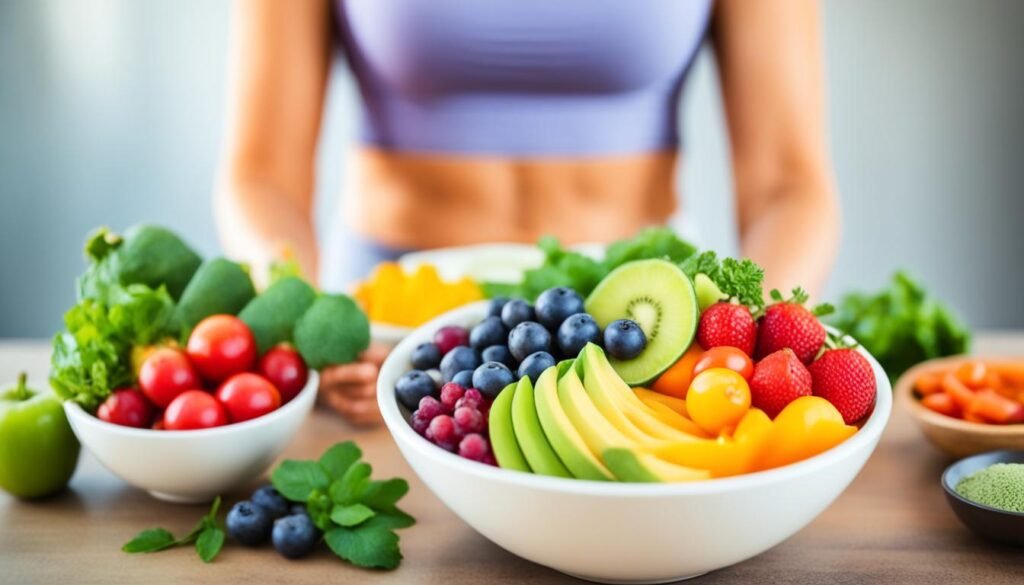
| Ingredient | Health Benefits |
|---|---|
| Ginger | Improves digestion, reduces inflammation |
| Cumin | Aids in digestion, supports detoxification |
| Coriander | Calms inflammation, improves digestion |
| Mint | Soothes the digestive system, promotes detoxification |
| Triphala | Supports detoxification, improves bowel movements |
| Turmeric | Reduces inflammation, supports liver detoxification |
Ayurvedic Seasonal Recipes for Each Dosha
In Ayurveda, the ancient Indian system of medicine, it is believed that the human body is influenced by three doshas – Vata, Pitta, and Kapha. Each dosha represents different elements and qualities, and maintaining a balance among them is crucial for overall health and wellbeing. Ayurvedic recipes can be tailored to each dosha to create balanced meals that support the specific needs of each individual.
The Three Doshas
Let’s take a closer look at each dosha and their characteristics:
Vata: Associated with the elements of air and space, Vata dosha represents movement and change. It governs bodily functions related to circulation, breathing, and movements. When imbalanced, Vata can lead to anxiety, dryness, and digestive issues.
Pitta: Pitta dosha is associated with the elements of fire and water, representing transformation and metabolism. It governs digestion, metabolism, and body temperature. Imbalances in Pitta can manifest as excessive body heat, inflammation, and digestive disorders.
Kapha: Kapha dosha is associated with the elements of earth and water, representing stability and structure. It governs body structure, lubrication, and immunity. When imbalanced, Kapha can lead to weight gain, lethargy, and congestion.
Ayurvedic recipes for each dosha focus on using ingredients and flavours that can help balance the specific dosha’s characteristics. By incorporating the right foods into your diet, you can support your body’s natural balance and promote overall wellbeing.
Crafting Balanced Meals for Each Dosha
Here’s a general guideline for creating balanced meals for each dosha:
- Vata: Vata dosha benefits from warm, grounding, and nourishing foods. Choose cooked meals over raw, and include flavours that are sweet, sour, and salty. Incorporate ingredients like root vegetables, whole grains, ghee, and warming spices like cinnamon and ginger.
- Pitta: Pitta dosha benefits from cooling and calming foods. Opt for fresh, seasonal fruits and vegetables, and favour flavours that are sweet, bitter, and astringent. Include foods like leafy greens, coconut, cilantro, and cooling spices like mint and coriander.
- Kapha: Kapha dosha benefits from light and stimulating foods. Choose foods with flavours that are pungent, bitter, and astringent. Include ingredients like leafy greens, beans, chili peppers, and spices like black pepper and turmeric.
By understanding the qualities of each dosha and incorporating the right ingredients and flavours in your meals, you can create balanced Ayurvedic recipes that support your specific dosha and promote overall wellbeing.
Ayurvedic Flavours and Ingredients for Each Dosha
Here’s a table summarizing the flavours and ingredients recommended for each dosha:
| Dosha | Flavours | Ingredients |
|---|---|---|
| Vata | Sweet, Sour, Salty | Root vegetables, whole grains, ghee, cinnamon, ginger |
| Pitta | Sweet, Bitter, Astringent | Fresh fruits and vegetables, coconut, cilantro, mint, coriander |
| Kapha | Pungent, Bitter, Astringent | Leafy greens, beans, chili peppers, black pepper, turmeric |
Ayurvedic Holiday Recipes
Holidays are a time for indulgence and celebration, but that doesn’t mean you have to compromise your health and wellbeing. By incorporating Ayurvedic principles into your holiday meals, you can create a balanced menu that satisfies everyone while nourishing your body and soul.
One of the key aspects of Ayurvedic cooking is using seasonal produce. During the holiday season, take advantage of the abundance of fresh, local ingredients to enhance the flavours and nutritional value of your dishes. Incorporating seasonal produce not only adds vibrant colours and textures to your meals but also ensures that you are consuming ingredients at their peak freshness and nutritional content.
Ayurveda emphasizes the use of a wide variety of flavours to create well-rounded and satisfying meals. By incorporating a variety of Ayurvedic flavours such as sweet, sour, salty, bitter, astringent, and pungent, you can ensure that your holiday meals are not only delicious but also beneficial for your overall health.
During the winter season, it’s important to counteract the drying effects of the cold weather. Emphasizing warm, hydrating broths and rich sauces in your holiday recipes can help keep your body nourished and balanced.
Creating a balanced menu is essential to support your health and wellbeing during the holidays. Consider including a variety of dishes that provide a balance of flavours, textures, and nutrients. This ensures that everyone’s dietary needs are met and that there is something for everyone to enjoy.
Below is an example of a balanced Ayurvedic holiday menu:
| Course | Recipe | Ayurvedic Flavour |
|---|---|---|
| Appetizer | Roasted Winter Vegetable Salad | Bitter |
| Main Course | Masala Roasted Turkey | Pungent |
| Side Dish | Sweet Potato Mash | Sweet |
| Side Dish | Green Beans with Almonds | Astringent |
| Dessert | Cardamom Coconut Truffles | Sweet |
By creating a balanced menu that incorporates seasonal produce and a variety of Ayurvedic flavours, you can enjoy a holiday meal that not only satisfies your taste buds but also supports your overall health and wellbeing.
The Importance of Pleasure in Ayurvedic Cooking
Ayurvedic cooking is not only about nourishment and health, but also about pleasure and enjoyment. It is essential to find joy in the process of cooking and savouring the flavours of the final dish. While it is important to incorporate ingredients and spices that are beneficial for our overall well-being, taste should never be compromised.
Ayurvedic meals are designed to be balanced and satisfying, providing both physical and emotional enjoyment. When we take pleasure in the food we prepare and consume, it can have a positive impact on our overall well-being. Pleasurable eating experiences can help reduce stress, improve digestion, and enhance our emotional state.
When preparing Ayurvedic recipes, it is essential to create a harmonious balance of flavours, textures, and colours. This not only enhances the taste of the dish but also stimulates our senses and brings a deeper level of enjoyment to the eating experience.
“Pleasure in the job, puts perfection in the work.” – Aristotle
By prioritizing pleasure in Ayurvedic cooking, we can transform the mundane act of preparing a meal into a joyful and meditative practice. Taking the time to engage with our senses, appreciate the unique qualities of each ingredient, and infuse our dishes with love and care can elevate our culinary experiences to new heights.
A balanced meal that not only nourishes our bodies but also brings us joy can contribute to a greater sense of well-being. It is a reminder that the act of cooking and eating is not just about sustenance, but about nourishing our entire being – mind, body, and soul.
The Pleasure of Ayurvedic Cooking in Practice
Here are a few simple ways to incorporate pleasure into your Ayurvedic cooking:
- Experiment with different flavours and spices to create exciting taste combinations.
- Take your time while preparing and cooking, savouring each step of the process.
- Use fresh, high-quality ingredients to enhance the flavours of your dishes.
- Engage all of your senses by appreciating the colours, textures, and aromas of the ingredients.
- Invite loved ones to join you in the kitchen and share in the joy of preparing and enjoying a meal together.
Remember, pleasure in cooking is not just a bonus, but an essential part of the Ayurvedic approach to nourishing our bodies and souls. When we find joy in the process of creating and consuming our meals, we tap into the transformative power of food and its ability to bring us physical and emotional well-being.
Visual Pleasure in Ayurvedic Cooking
To complement the importance of pleasure in Ayurvedic cooking, here is an image that embodies the joy and satisfaction of preparing a delicious Ayurvedic meal:
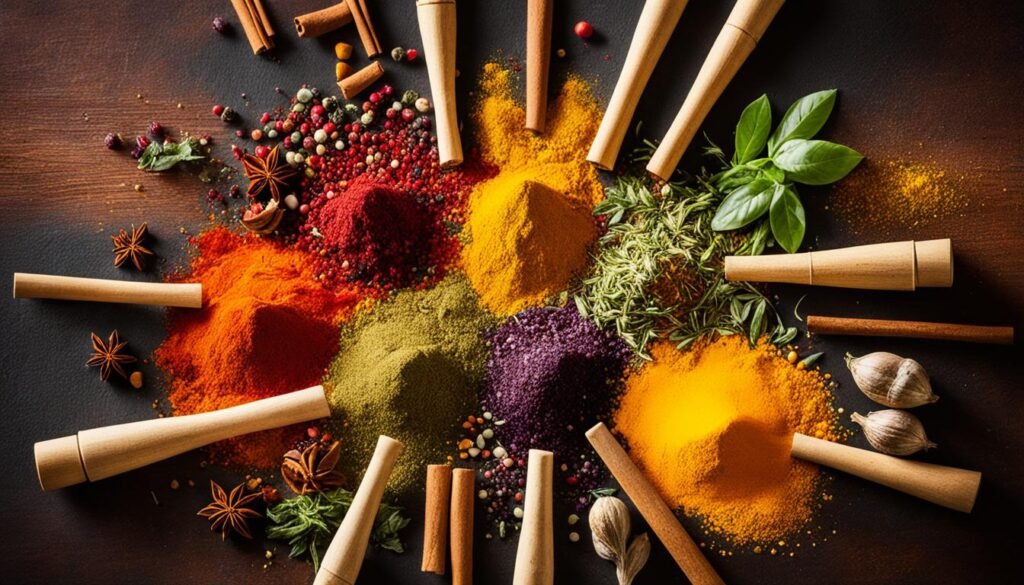
Ayurvedic Flavours and Emotions
Ayurveda teaches that a well-nourished and emotionally contented meal should include a balance of six flavours – sweet, sour, salty, bitter, astringent, and pungent. Each flavour is associated with a specific emotion, and having them in balance can create an interesting and memorable dining experience.
The Six Ayurvedic Flavours and their Associated Emotions
| Ayurvedic Flavour | Associated Emotion |
|---|---|
| Sweet | Love, compassion, happiness |
| Sour | Excitement, enthusiasm, joy |
| Salty | Courage, determination, confidence |
| Bitter | Detachment, wisdom, introspection |
| Astringent | Calmness, focus, discipline |
| Pungent | Ambition, passion, energy |
By including these Ayurvedic flavours in our meals, we can not only satisfy our taste buds but also tap into the associated emotions. Creating a meal that encompasses a harmonious blend of these flavours can lead to emotional contentment and a more fulfilling dining experience.
Ayurvedic Recipes for the Holiday Season
As the holiday season approaches, it’s the perfect time to incorporate Ayurvedic principles into your cooking. By preparing Ayurvedic holiday recipes that align with the principles of the doshas and utilize local and seasonal produce, you can create meals that not only satisfy your taste buds but also support your overall health and wellbeing.
Ayurveda, an ancient system of medicine and holistic wellness, emphasizes the importance of balancing the doshas – Vata, Pitta, and Kapha. Each dosha has its own unique characteristics and requires specific flavours and ingredients to maintain harmony within the body.
When creating your Ayurvedic holiday recipes, consider incorporating local and seasonal produce. This ensures that you are consuming ingredients that are fresh, rich in nutrients, and in harmony with the natural rhythms of the season. By using ingredients that are readily available in your area, you can also support local farmers and promote sustainable food practices.
Here is an example of a delicious Ayurvedic holiday recipe that incorporates local and seasonal produce:
Roasted Winter Vegetable Medley
| Ingredients | Directions |
|---|---|
| 1 large sweet potato, peeled and cubed1 small butternut squash, peeled, seeded, and cubed2 parsnips, peeled and sliced2 carrots, peeled and sliced1 red onion, sliced2 tablespoons olive oil1 teaspoon dried thyme1 teaspoon dried rosemary Salt and pepper to taste | Preheat your oven to 400°F (200°C).In a large bowl, combine the sweet potato, butternut squash, parsnips, carrots, and red onion. Drizzle olive oil over the vegetables and sprinkle with dried thyme, dried rosemary, salt, and pepper. Toss the vegetables until they are evenly coated with the oil and spices. Spread the vegetables in a single layer on a baking sheet. Bake for 25-30 minutes or until the vegetables are tender and golden brown. Remove from the oven and serve as a side dish with your holiday meal. |
This roasted winter vegetable medley not only embraces the flavours of the season but also provides a nourishing and satisfying accompaniment to your holiday feast. The sweet potato and butternut squash offer a naturally sweet taste, while the parsnips and carrots provide earthy flavours. The combination of warming spices like thyme and rosemary adds depth and aroma to the dish.
Remember to pay attention to the dosha balance when creating your Ayurvedic holiday recipes. For example, if you are primarily Vata, you may want to incorporate warming ingredients and spices to balance the cold and dry qualities of this dosha. On the other hand, if you lean more towards Pitta or Kapha, you can focus on incorporating flavours and ingredients that help balance these doshas.
By embracing Ayurvedic principles and utilizing local and seasonal produce, you can create holiday meals that not only delight your taste buds but also nourish your body and support your overall wellbeing. Explore the vast array of Ayurvedic recipes available and start incorporating them into your holiday cooking for a truly holistic and balanced festive season!
Conclusion
Ayurvedic cooking offers a holistic approach to nourishing our bodies and promoting overall wellbeing. By embracing the principles of Ayurveda and incorporating seasonal recipes into our meals, we can create balanced and nourishing dishes that support our health.
Seasonal recipes in Ayurvedic cooking focus on using fresh, locally sourced ingredients that are abundant during specific times of the year. By cooking with these seasonal ingredients, we can maximize their nutritional value and enjoy their natural flavours.
When we adopt Ayurvedic cooking practices, we prioritize the balance of flavours in our meals, ensuring the inclusion of sweet, sour, salty, bitter, astringent, and pungent tastes. This not only contributes to an enjoyable dining experience but also helps to create a harmonious balance in our bodies.
Incorporating Ayurvedic cooking into our daily lives can lead to a more nourishing and balanced lifestyle. By being mindful of the ingredients we use, cooking with the seasons, and ensuring our meals are balanced, we can support our overall wellbeing and promote a healthier way of living.
FAQ
What is Ayurvedic cooking?
Ayurvedic cooking is a mindful, meditative approach to eating that focuses on using freshly sourced, seasonal ingredients to promote detoxification and rejuvenation.
What is the philosophy behind Ayurvedic cooking?
Ayurvedic cooking emphasizes the medicinal properties of food and the idea that food has the power to heal. It encourages a shift to slow eating and using seasonal ingredients to support overall health and wellbeing.
Can Ayurvedic recipes help with digestion and cleansing?
Yes, Ayurvedic recipes can support good digestion and cleansing, which are crucial for overall health. They can also be used as part of an Ayurvedic diet for weight loss.
How can Ayurvedic recipes be tailored to individual doshas?
Ayurveda recognizes three doshas – Vata, Pitta, and Kapha – which influence our bodies and personalities. Ayurvedic recipes can be tailored to each dosha to create balanced meals that support overall wellbeing.
How can Ayurvedic principles be applied to holiday meals?
By incorporating seasonal produce and a variety of Ayurvedic flavours, holiday meals can be both indulgent and nourishing. Emphasizing warm, hydrating broths and rich sauces can counteract the drying effects of winter weather.
Is taste and enjoyment compromised in Ayurvedic cooking?
No, Ayurvedic cooking prioritizes pleasure and enjoyment. While it focuses on ingredients and spices that are beneficial for health, the taste and enjoyment of the meal are not compromised. A balanced meal can bring both physical and emotional enjoyment.
What are the six flavours in Ayurvedic cooking?
The six flavours in Ayurvedic cooking are sweet, sour, salty, bitter, astringent, and pungent. Each flavour is associated with a specific emotion, and having them in balance can create an interesting and memorable dining experience.
How can Ayurvedic recipes be incorporated into the holiday season?
The holiday season can be a time to create Ayurvedic recipes that are in line with the principles of the doshas and incorporate local and seasonal produce. By balancing the flavours and ingredients, holiday meals can support overall health and wellbeing.
What are the benefits of adopting Ayurvedic principles in cooking?
Adopting Ayurvedic principles in cooking provides a holistic approach to eating. By incorporating fresh, seasonal ingredients and balancing the flavours, Ayurvedic recipes can promote nourishment, balance, and overall wellbeing.


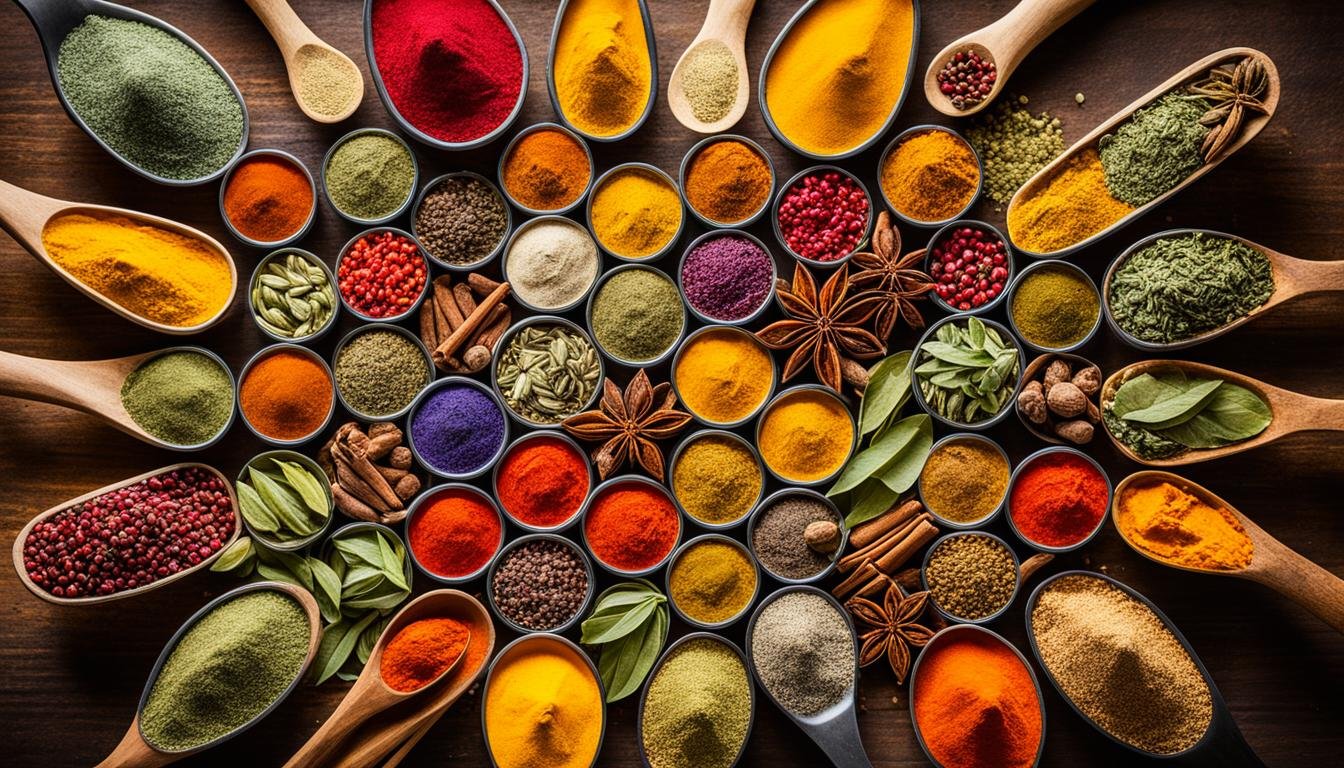

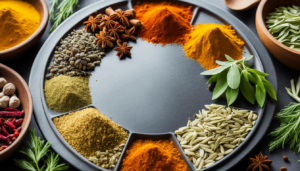

Pingback: Ayurvedic Easy-to-Digest Recipes For Gentle Eating
Pingback: Embrace Life With Ayurveda Principles & Tips